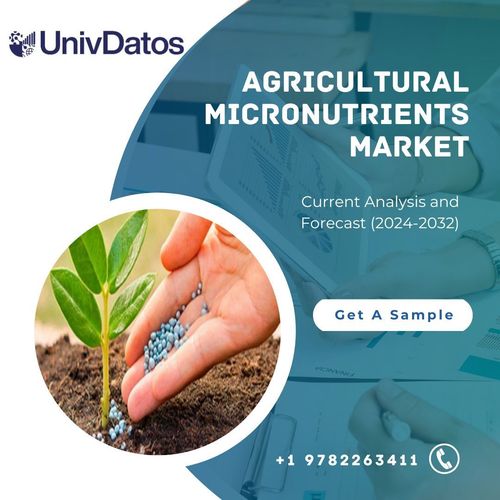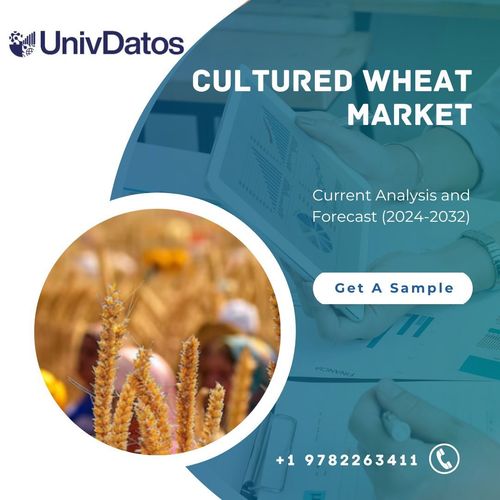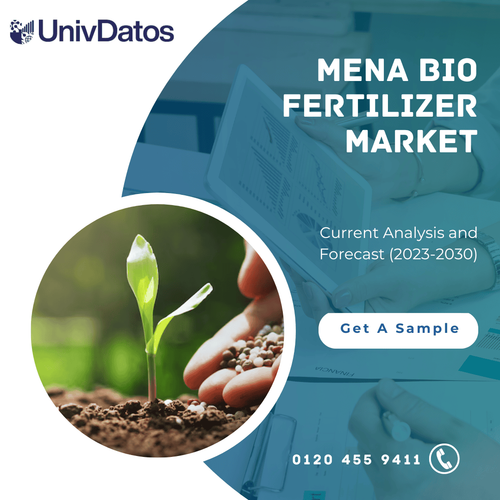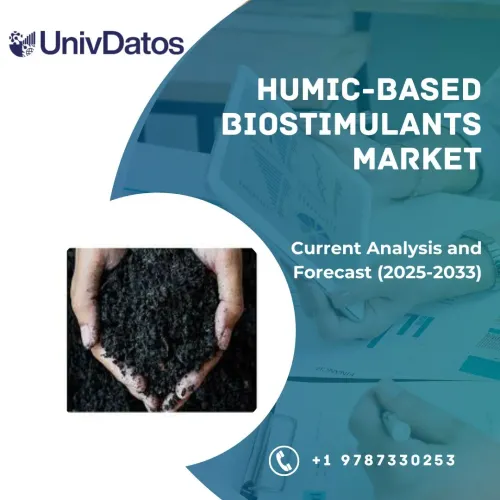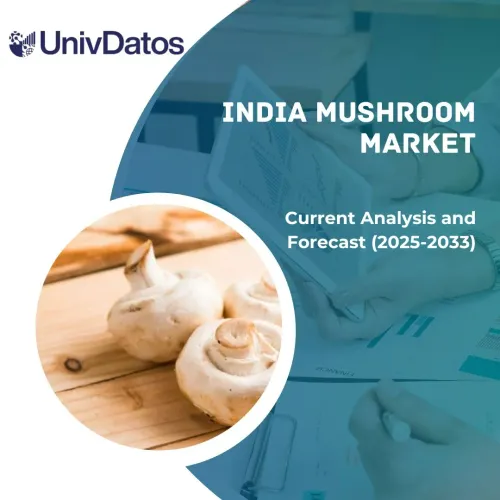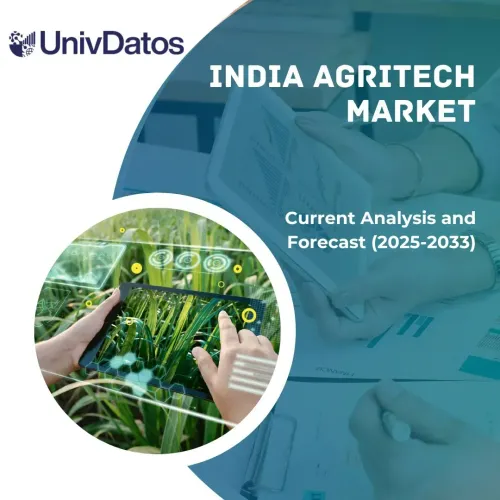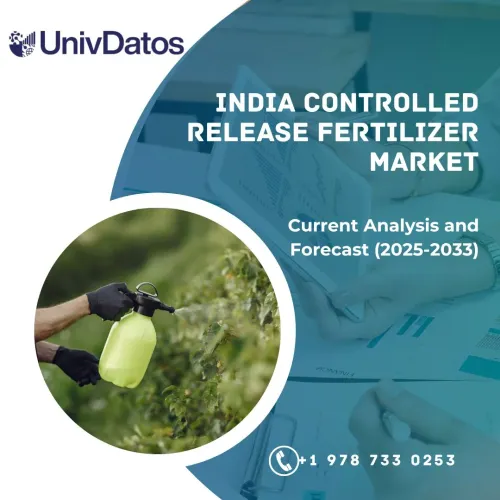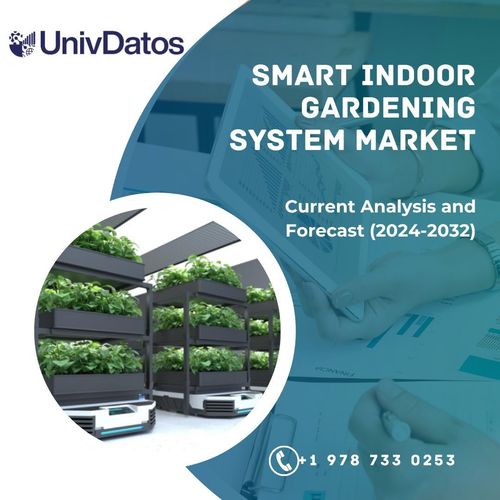- Home
- About Us
- Industry
- Services
- Reading
- Contact Us
Humic-based Biostimulants Market: Current Analysis and Forecast (2025-2033)
Emphasis on Product Type (Humic Acid, Fulvic Acid, and Potassium Humate); Form (Liquid, Water-Soluble Granules, and Water-Soluble Powders); Application (Soil Treatment, Seed Treatment, and Foliar Spray); and Region/Country
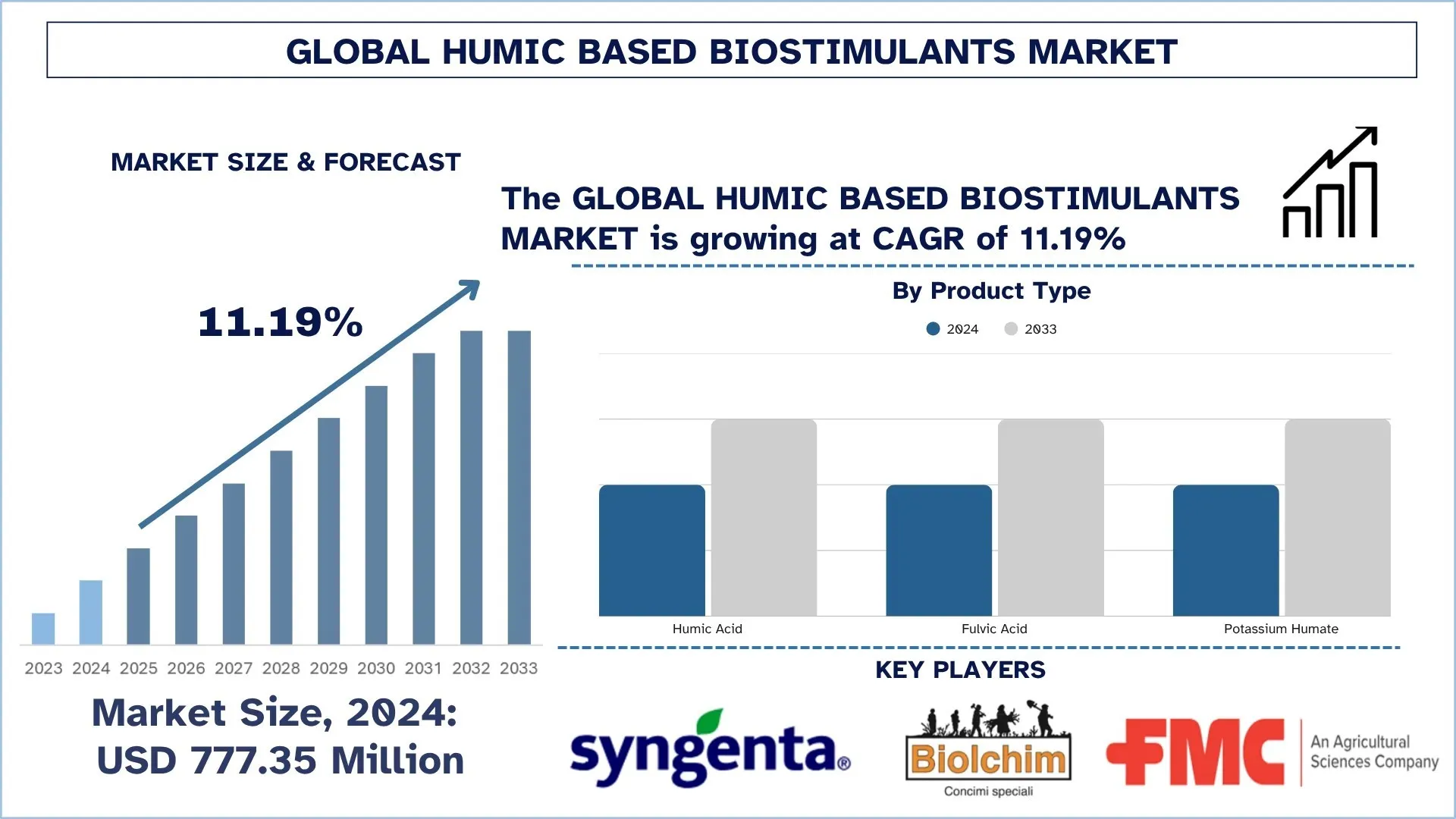
Global Humic-based Biostimulants Market Size & Forecast
The Global Humic-based Biostimulants Market was valued at USD 777.35 million in 2024 and is expected to grow at a CAGR of around 11.19% during the forecast period (2025-2033F), driven by the growing demand for sustainable agriculture and expansion of organic farming practices.
Humic-based Biostimulants Market Analysis
The biostimulants market is driven by the increasing demand for sustainable agriculture, crop production, and soil health, resulting in constant growth in the humic-based market. Biostimulants based on humic are organic compounds obtained mainly from leonardite, peat, or composted materials and are a mixture of humic acid, fulvic acid, and potassium humate. These compounds are essential for enhancing the uptake of nutrients, promoting root growth, and increasing microbial activity in the rhizosphere, which in turn promotes plant growth despite stressful conditions. As farmers increasingly abandon the use of synthetic agrochemicals, humic-based biostimulants are being identified as crucial inputs that foster sustainable agricultural practices. These products have gained momentum due to the global trend in organic and regenerative agriculture. Their advantages are that they allow more nutrient efficiency, greater soil structure and moisture retention, and resistance to abiotic stress such as drought or salinity. The development of more formulations, compatibility with the fertigation systems, and combinations with precision agriculture tools of these biostimulants are making these more adaptable, cost-efficient, and effective in all crop varieties and geographies.
Global Humic-based Biostimulants Market Trends
This section discusses the key market trends that are influencing the various segments of the global humic-based biostimulants market, as found by our team of research experts.
Integration with Precision Agriculture Systems
This incorporation of precision agriculture technologies in humic-based biostimulants revolutionizes modern farming practices as it revamps the nutrient management, advances crop yields, and ensures a sustainable system of farming. Advanced technologies such as GPS, drones, soil sensors, and data analytics are used in precision farming to ensure site-specific crop management and monitoring. An example is the Variable Rate Technology (VRT), which helps apply biostimulants at different rates throughout the fields to fully maximize their efficacy. Also, remote sensing technologies can be used by the farmers to monitor the health and variability of crops, and they can guarantee that humic-based biostimulants are used only when needed, to make a better use of nutrients and diminish environmental impact. The integration not only increases crop productivity but is also consistent with international initiatives regarding sustainable agriculture, as it reduces the amount of chemicals used in agriculture and fosters a healthy soil.
Humic-based Biostimulants Industry Segmentation
This section provides an analysis of the key trends in each segment of the global humic-based biostimulants market report, along with forecasts at the global, regional, and country levels for 2025-2033.
The Humic Acid Segment Dominates the Humic-based Biostimulants Market
Based on product type, the humic-based biostimulants market is segmented into Humic Acid, Fulvic Acid, and Potassium Humate. In 2024, the Humic Acid segment dominated the market and is expected to maintain its lead through the forecast period. Products based on humic acid have also experienced enormous growth because of their high molecular weight and good chelating traits, and better results when used in enhancing soil structure and retention of nutrients. This is because it promotes microbial activity, increases root growth and nutrient absorption; therefore, it is most effective in various crops as well as soil types. Although the use of fulvic and potassium humate products is increasing in interest, humic acid is the most popular one, especially in broad-acre production systems and organic production systems. This has made it remain the preferred option due to its cost-effectiveness, empirical effects on crop productivity, and ability to be deployed using both the traditional and modernized application processes. Moreover, further proliferation in the use of sustainable farm methods, state-paid subsidies, and widening organic acreage across the globe further spurs the expansion of this division.
The Liquid Form Category held the Largest Market Share in the Humic-based Biostimulants Market.
Based on form, the humic-based biostimulants market is segmented into Liquid, Water-Soluble Granules, and Water-Soluble Powders. In 2024, the liquid segment held the largest share and is expected to remain at the top for the next few years. Liquid formulations are also commonly used as they are portable, and they absorb faster in plants, with the ability to be channeled through the already existing irrigation and fertigation channels. This makes them very convenient in large row crop production, greenhouse farming, and use in precision farming. Liquid formulation is in a stable and uniform detention where performance can be largely constant under varying soil and environmental conditions. Besides, the increased application of drip and sprinkler irrigation systems in contemporary agriculture increases the need to use liquid biostimulants, initiating their delivery onto the root zone effectively. Since farmers are demanding more convenience in storage, mixing, and application of products, liquid humic biostimulants present an asset in terms of time efficiencies, flexibility, and affordability in the application, which places the liquid format as the format of choice worldwide.
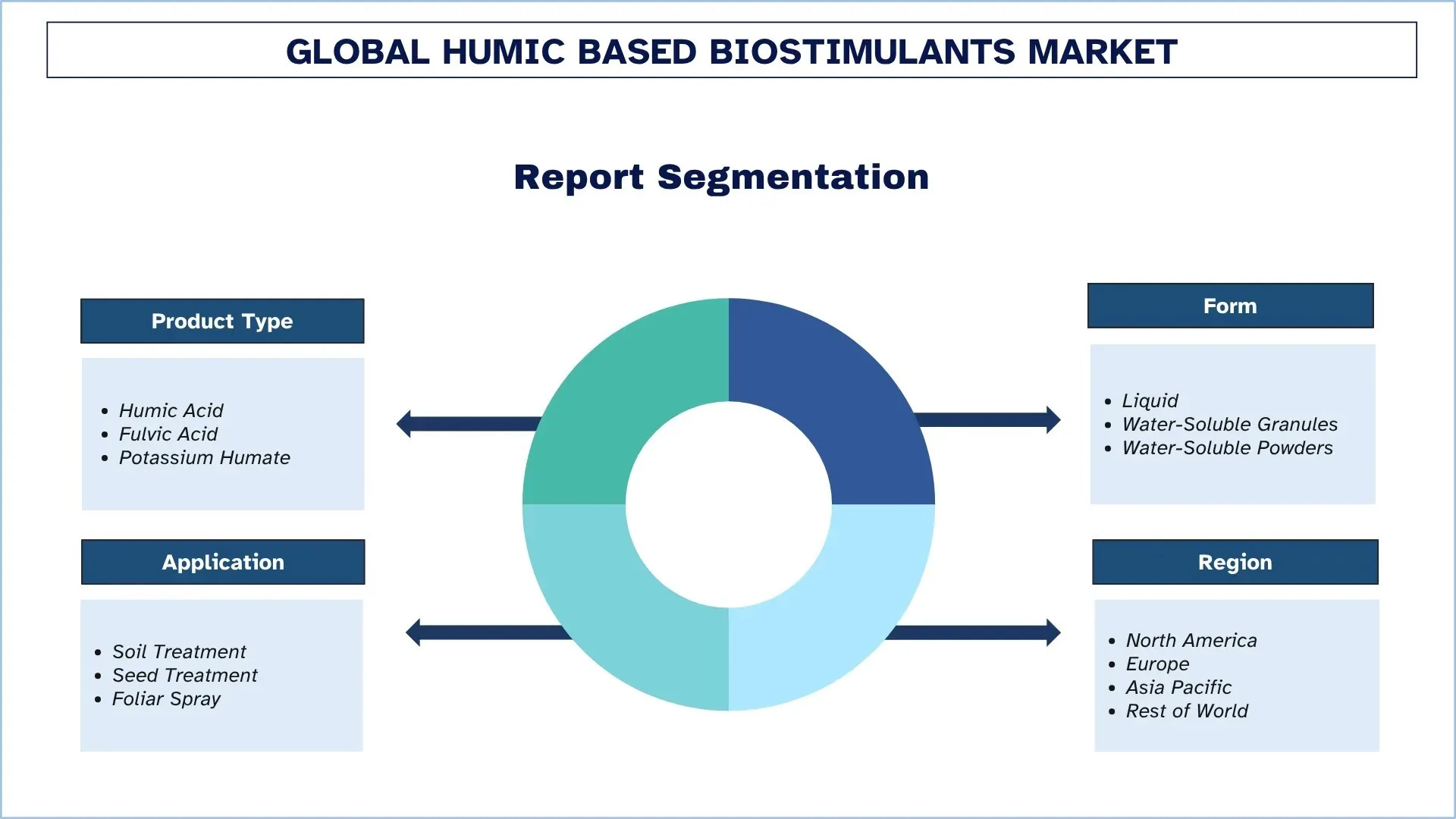
North America Dominated the Global Humic-based Biostimulants Market
North America leads the market presently in humic-based biostimulants, and it is also likely to dominate the market in the forecast period. This can be largely explained by the developed farming methods, substantial amounts of organic agriculture, and widely used sustainable inputs by large-scale farmers in the region. The existence of large biostimulant producers and the growing interest in studying regenerative agriculture and soil health also promote regional development. Also, North America is experiencing an upsurge in government support and regulatory transparency of organic and biobased ancillaries, which enhances adoption. The emphasis on the optimization of crop productivity and the minimization of the effects on the environment in the region has guaranteed the ever-increasing demand for products using humic material. Moreover, the wider adoption of precision farming technology and increased knowledge of the farmers regarding soil degradation would also tend to boost the adoption of humic-based biostimulants in the future years.
U.S. held a dominant Share of the North America Humic-based Biostimulants Market in 2024
The U.S. market leads the global humic-based biostimulants market due to the high level of governmental support, the widespread agricultural ecosystem, and motivated drives towards investing in green ag-based farming. Humic-based biostimulants are growing in popularity among producers in large-scale agriculture and organic production in the United States to improve soil health, nutrient efficiency, and crop resiliency. Farmers in the U.S still enjoy increased crop production with simultaneous environmental protection as innovations in liquid and nano-formulations take place. Also, the growing preference for organic crops supplemented with government support of sustainable agriculture is making the U.S. a market leader in the humic-based biostimulants segment, driving the usage of advanced biostimulant technologies in diverse crop classes and cultivation practices.

Humic-based Biostimulants Industry Competitive Landscape
The global humic-based biostimulants market is competitive, with several global and international market players. The key players are adopting different growth strategies to enhance their market presence, such as partnerships, agreements, collaborations, new product launches, geographical expansions, and mergers and acquisitions.
Top Humic-based Biostimulants Companies
Some of the major players in the market are Syngenta, Biolchim SPA, FMC Corporation, Haifa Negev technologies LTD, UPL, Bayer AG, Sikko Industries Ltd., Humintech, PROMISOL S.A., and Borregaard AS.
Recent Developments in the Humic-based Biostimulants Market
In July 2023, UK-based producer of natural biopesticides, biostimulants, and biofertilizers Bionema Group Ltd., announced a new line of biostimulant products in the UK. The products can be used in agriculture, horticulture, forestry, and in turf and amenities. These microorganisms are encased in Bionema Incapsulex technology platform, whose unique design specifically optimizes transportation of the microorganism to the plants and soil.
In November 2022, Biolchim S.p.A. was acquired by J.M. Huber Corporation, a US-based chemical manufacturing company, at an undisclosed amount. The Biolchim Group acquisition is one of the strategic moves by Huber AgroSolutions (HAS), a subsidiary of HEM, in consolidating its efforts to become a world-leading developer of environmentally sustainable and high-performance agricultural products.
Global Humic-based Biostimulants Market Report Coverage
Report Attribute | Details |
Base year | 2024 |
Forecast period | 2025-2033 |
Growth momentum | Accelerate at a CAGR of 11.19% |
Market size 2024 | USD 777.35 Million |
Regional analysis | North America, Europe, APAC, Rest of the World |
Major contributing region | North America is expected to dominate the market during the forecast period. |
Key countries covered | U.S., Canada, Germany, U.K., Spain, Italy, France, China, Japan, and India |
Companies profiled | Syngenta, Biolchim SPA, FMC Corporation, Haifa Negev technologies LTD, UPL, Bayer AG, Sikko Industries Ltd., Humintech, PROMISOL S.A., and Borregaard AS. |
Report Scope | Market Trends, Drivers, and Restraints; Revenue Estimation and Forecast; Segmentation Analysis; Demand and Supply Side Analysis; Competitive Landscape; Company Profiling |
Segments Covered | By Product Type; By Form; By Application; By Region/Country |
Reasons to Buy Humic-based Biostimulants Market Report:
The study includes market sizing and forecasting analysis confirmed by authenticated key industry experts.
The report briefly reviews overall industry performance at a glance.
The report covers an in-depth analysis of prominent industry peers, primarily focusing on key business financials, type portfolios, expansion strategies, and recent developments.
Detailed examination of drivers, restraints, key trends, and opportunities prevailing in the industry.
The study comprehensively covers the market across different segments.
Deep dive regional-level analysis of the industry.
Customization Options:
The global humic-based biostimulants market can further be customized as per the requirements or any other market segment. Besides this, UnivDatos understands that you may have your own business needs; hence, feel free to contact us to get a report that completely suits your requirements.
Table of Content
Research Methodology for the Global Humic-based Biostimulants Market Analysis (2023-2033)
We analyzed the historical market, estimated the current market, and forecasted the future market of the global humic-based biostimulants market to assess its application in major regions worldwide. We conducted exhaustive secondary research to gather historical market data and estimate the current market size. To validate these insights, we carefully reviewed numerous findings and assumptions. Additionally, we conducted in-depth primary interviews with industry experts across the humic-based biostimulants value chain. After validating market figures through these interviews, we used both top-down and bottom-up approaches to forecast the overall market size. We then employed market breakdown and data triangulation methods to estimate and analyze the market size of industry segments and sub-segments.
Market Engineering
We employed the data triangulation technique to finalize the overall market estimation and derive precise statistical numbers for each segment and sub-segment of the global humic-based biostimulants market. We split the data into several segments and sub-segments by analyzing various parameters and trends, including product type, form, application, and regions within the global humic-based biostimulants market.
The Main Objective of the Global Humic-based Biostimulants Market Study
The study identifies current and future trends in the global humic-based biostimulants market, providing strategic insights for investors. It highlights regional market attractiveness, enabling industry participants to tap into untapped markets and gain a first-mover advantage. Other quantitative goals of the studies include:
Market Size Analysis: Assess the current market size and forecast the market size of the global humic-based biostimulants market and its segments in terms of value (USD).
Humic-based Biostimulants Market Segmentation: Segments in the study include areas of product type, form, application, and regions.
Regulatory Framework & Value Chain Analysis: Examine the regulatory framework, value chain, customer behavior, and competitive landscape of the humic-based biostimulants industry.
Regional Analysis: Conduct a detailed regional analysis for key areas such as Asia Pacific, Europe, North America, and the Rest of the World.
Company Profiles & Growth Strategies: Company profiles of the humic-based biostimulants market and the growth strategies adopted by the market players to sustain the fast-growing market.
Frequently Asked Questions FAQs
Q1: What is the global humic-based biostimulants current market size and its growth potential?
The global humic-based biostimulants market was valued at USD 777.35 million in 2024 and is expected to grow at a CAGR of 11.19% during the forecast period (2025-2033).
Q2: Which segment has the largest share of the global humic-based biostimulants market by product type?
The Humic Acid segment dominated the market and is expected to maintain its lead through the forecast period. Products based on humic acid have also experienced enormous growth because of their high molecular weight and good chelating traits, and better results when used in enhancing soil structure and retention of nutrients.
Q3: What are the driving factors for the growth of the global humic-based biostimulants market?
• Growing Demand for Sustainable Agriculture: Increasing concerns over soil health and the environmental impact of synthetic inputs are pushing farmers toward eco-friendly alternatives like humic-based biostimulants.
• Expansion of Organic Farming Practices: Rising global acreage under certified organic cultivation is driving adoption of humic products due to their compatibility with organic certification standards.
• Improved Crop Productivity and Stress Tolerance: Humic substances enhance nutrient uptake, root growth, and resistance to abiotic stress (e.g., drought, salinity), making them appealing for improving yield stability.
Q4: What are the emerging technologies and trends in the global humic-based biostimulants market?
• Integration with Precision Agriculture Systems: Humic biostimulants are being combined with data-driven tools to optimize dosing and application timing for improved results.
• Product Innovation in Liquid and Nano Formulations: Development of highly soluble, concentrated, and nano-sized formulations is increasing ease of use and effectiveness.
• Private-Label Expansion by Agro-Retailers: Distributors and cooperatives are launching their own branded humic products, increasing market penetration and affordability.
Q5: What are the key challenges in the global humic-based biostimulants market?
• Lack of Standardized Regulations: Inconsistent regulatory frameworks across regions make it difficult for manufacturers to register and commercialize products globally.
• Limited Farmer Awareness and Technical Knowledge: Adoption is hindered in developing regions where farmers may lack understanding of biostimulant benefits and application techniques.
• Variable Efficacy Across Soil Types and Climates: Performance of humic-based products can vary depending on local conditions, requiring site-specific testing and formulation.
Q6: Which region dominates the global humic-based biostimulants market?
North America leads the market presently in humic-based biostimulants, and it is also likely to dominate the market in the forecast period. This growth is driven by advanced farming methods, widespread organic agriculture, and the use of sustainable inputs by large-scale farmers. The presence of major biostimulant producers and increasing interest in regenerative agriculture further boosts regional development.
Q7: Who are the key players in the global humic-based biostimulants market?
Some of the key companies include:
• Syngenta
• Biolchim SPA
• FMC Corporation
• Haifa Negev technologies LTD
• UPL
• Bayer AG
• Sikko Industries Ltd.
• Humintech
• PROMISOL S.A.
• Borregaard AS
Q8: How are companies in the humic-based biostimulants market preparing for increasing competition?
• Strategic Partnerships & Collaborations: Companies are forming partnerships with research institutions and agrochemical firms to innovate and expand their product portfolios.
• Focus on Product Differentiation: By investing in R&D, companies are developing novel formulations, such as nano-based or liquid-based biostimulants, to stay competitive.
• Acquisitions and Mergers: Key players are actively pursuing mergers and acquisitions to strengthen their market position and expand their distribution networks globally.
Q9: How are changes in consumer behavior influencing the demand for humic-based biostimulants?
• Increased Consumer Preference for Organic Produce: Rising consumer awareness regarding the environmental impact of chemicals is driving demand for organically grown produce, in turn boosting the demand for humic-based biostimulants.
• Transparency and Labeling: Growing demand for traceability and sustainable practices is encouraging farmers to use biostimulants that can be marketed as eco-friendly and compliant with organic standards.
• Shift to Regenerative Agriculture: More consumers are supporting regenerative agriculture, which uses humic-based biostimulants to restore soil health and enhance biodiversity.
Related Reports
Customers who bought this item also bought


